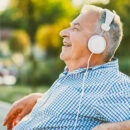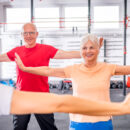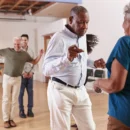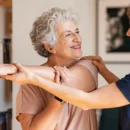The Importance and Benefits of Exercise for Seniors
Explore the essential exercises that every older adult should consider to maintain health and independence. Our detailed article breaks down the best activities for endurance, strength, balance, and flexibility for seniors—click to see how Koelsch Communities supports and encourages physical activity for vibrant senior living.
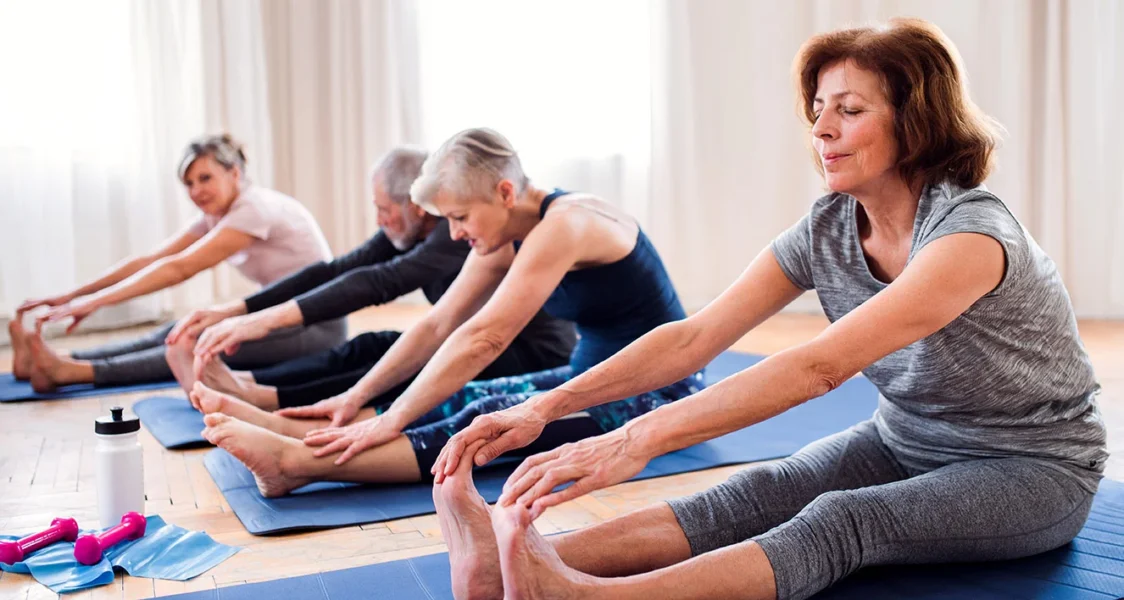
At Koelsch Communities, we witness firsthand how exercise profoundly uplifts seniors’ lives, turning daily routines into opportunities for joy and independence. Regular physical activity is foundational for maintaining health and vitality among older adults, offering benefits that ripple through all aspects of life, from enhancing mobility to boosting mental health. In this guide, you’ll learn about the various benefits of exercise for seniors 65 and older, the most effective types of activities suited to their needs, and practical tips for safely integrating exercise into daily life. This article will provide detailed yet accessible information and actionable steps that empower and motivate seniors and their families to embrace a more active lifestyle. Let’s get started!
Exercise & the Elderly: Why It’s Crucial
Physical Health Benefits
Engaging in regular exercise dramatically enhances heart health by improving blood flow and reducing blood pressure, significantly reducing the risk of heart disease and stroke in seniors. It also strengthens bones, which helps prevent the onset of osteoporosis, a common condition in older adults that makes bones fragile and more susceptible to fractures. Moreover, consistent strength training and aerobic workouts increase muscle mass and endurance, which helps maintain mobility and physical stability as the body ages.
Mental Health Enhancements
Physical activity is a powerful tool for mental well-being. It stimulates the brain’s release of endorphins, natural mood lifters that combat stress and pain. Regular exercise also supports cognitive functions by enhancing memory and attention, which can prevent the decline often associated with aging. Additionally, staying active reduces symptoms of anxiety and depression, which helps contribute to a more positive outlook and better mental health overall.
Independence and Quality of Life
Keeping up with regular physical activity helps seniors maintain their independence by enabling them to perform daily tasks more efficiently and safely. Strong muscles and good balance reduce the risk of falls, which are a leading cause of serious injury among the elderly. This ability to move freely and safely not only prolongs independence but also boosts confidence and enhances the overall quality of life for seniors.
“Regular exercise can significantly reduce the risk of chronic diseases like heart disease and diabetes. A consistent routine can also manage symptoms of existing conditions, improving seniors’ overall health and prolonging their independence for daily activities of living.”
Types of Exercises Recommended for Seniors
Endurance Exercises
Aerobic exercises such as walking or swimming are vital for maintaining cardiovascular health and increasing stamina in seniors. These endurance activities improve lung capacity and circulation and increase overall vitality. Regular brisk walking, for instance, not only lowers the risk of cardiovascular diseases but also enhances mood and energy levels. By engaging in 30 minutes of swimming a few times a week, seniors can also improve their joint health and reduce the pain associated with arthritis.
Strength Training
Strength training is key for building muscle strength and increasing bone density, which are essential for daily life activities. Using light weights or resistance bands, seniors can enhance their ability to perform tasks like carrying groceries or climbing stairs. Regular strength training sessions at a moderate to vigorous intensity can alleviate symptoms of chronic disease and health conditions such as arthritis, help manage weight, and contribute to better metabolic health.
Balance Exercises
Balance exercises such as standing on one foot, walking heel-to-toe, or engaging in Tai Chi are crucial for preventing falls, which are a significant risk for seniors. These activities strengthen the core and lower body muscles that support stability, which improves posture and reduces the likelihood of joint injuries.
Flexibility Exercises
Flexibility exercises, including gentle yoga and stretching routines, are essential for maintaining the range of motion and muscle elasticity. These exercise programs help seniors perform everyday movements such as reaching overhead, bending, and twisting with greater ease and less discomfort. Consistent practice can enhance mobility, reduce the risk of muscle strains, and make daily activities more manageable.
Optimal Exercise Practices for Seniors
Tailoring Exercise to Individual Ability
When it comes to exercise for seniors, one size does not fit all. It’s essential to customize workouts to match an individual’s fitness level and health conditions. Begin by consulting with a healthcare provider to identify any limitations or special needs. For those with joint issues, low-impact exercises like swimming or using an elliptical machine can be beneficial. Meanwhile, those with more stamina may enjoy light jogging or cycling. It’s also useful to integrate exercises that enhance flexibility and balance, like yoga or tai chi, which are particularly suitable for adaptation to varying abilities.
Safety Tips for Avoiding Injuries
Safety during exercise always comes first, especially for older adults. To avoid injuries, start with a warm-up to gently prepare the body for activity and conclude with a cool-down to help muscles relax. Use supportive equipment, such as proper footwear and, if necessary, joint supports. Ensure that the exercise environment is safe, removing any potential hazards like loose rugs or slippery floors. It’s also important to stay hydrated and avoid overly strenuous activities that could lead to health issues. Follow these precautions to enjoy optimal exercise and the elderly benefits from physical activity.
The Most Beneficial Exercises for Seniors
For seniors, some types of physical activity stand out for their safety, ease of access, and significant health benefits. Walking offers an excellent low-impact way to maintain cardiovascular health and leg strength. Water aerobics is another ideal option, providing resistance training that is gentle on the joints while also improving endurance. Strength training with resistance bands or light dumbbells helps maintain muscle mass and supports bone health. Chair yoga is another accessible option, since it adapts traditional yoga poses to enhance flexibility and improve balance safely from a seated position. These activities are well-suited to older adults looking to stay active and healthy.
Can Exercise Slow Aging?
Regular physical activity significantly impacts the aging process. Numerous studies have shown that seniors who exercise regularly experience reduced inflammation and increased cellular repair. These changes help maintain both brain function and physical health, effectively slowing aging. By enhancing blood flow and stimulating growth factors, exercise keeps muscles, joints, and organs healthier for longer. Moreover, active seniors often display better mental sharpness and have a lower risk of chronic diseases associated with aging, like Alzheimer’s and heart disease. Regular workouts are a powerful tool for keeping the body and mind youthful, especially when they are part of a lifestyle that includes proper nutrition, engaging activities, and meaningful relationships.
Addressing Common Barriers to Exercise for Older Adults
Psychological Barriers
Starting an exercise routine can be daunting for seniors, many of whom may feel overwhelmed by new physical challenges or fear of injury. To combat this, it’s crucial to foster a supportive environment that encourages small, initial steps. For instance, integrating gentle stretching exercises into daily routines can boost confidence and demonstrate that physical activity is within reach. Regular encouragement from instructors and family members can also play a crucial role in building a positive mindset towards regular exercise.
Physical Limitations
Seniors with disabilities or chronic conditions often face significant hurdles in maintaining an active lifestyle. Tailoring exercise to each individual’s ability is key. Adapted activities like seated strength exercises, walking with support, or light resistance band workouts can be effective options. Professional guidance from physical therapists or exercise specialists who design programs that address and adapt to these limitations can ensure safety and enhance mobility without undue strain.
Social and Environmental Factors
Isolation or lack of access to suitable exercise venues can deter seniors from staying active. Community centers, local parks, and senior living communities often offer group classes tailored to older adults, providing not only a safe space for exercise but also a chance to socialize. These activities might include dance classes, group walks, or aqua aerobics, all designed to cater to varying fitness levels and interests, making it easier for seniors to get involved and stay motivated.
Integrating Exercise Into the Daily Routine
Incorporating exercise into daily life doesn’t require sweeping changes. Start with simple steps like walking around the neighborhood after meals or doing stretches during TV commercials. Set a timer to stand up and move for a few minutes every hour. Even gardening or dancing to favorite songs adds up in boosting fitness. These small activities make a big difference in maintaining flexibility, balance, and strength. Choosing activities that fit personal interests and abilities helps keep exercise enjoyable and consistent for seniors.
Closing Thoughts on Physical Activity Benefits for Older Adults
Exercise brings vast health and wellness benefits for seniors, from enhancing muscle strength and heart health to boosting mood and cognitive function. Seniors can benefit from a mix of aerobic activity, strength training, balance activities, and flexibility practices. Start with small, achievable goals like daily walks or gentle stretching sessions. Gradually increasing activity levels can lead to significant improvements in overall health and independence. Embrace these steps, and enjoy the benefits of a healthier, more active lifestyle!
About Koelsch Communities
Since 1958, KoelschCommunities has been committed to providing environments where older adults thrive. Our approach to exercise and wellness is designed to meet the unique needs of each resident by giving them the personalized attention they deserve. For more information on how we can help integrate beneficial exercise routines into the lives of your loved ones, please contact us. Our community embraces adventure at every stage of life, with each moment lived to the fullest.
Contact us to discover more about our dedicated wellness programs and how we tailor our environments to promote the health and happiness of every resident.




